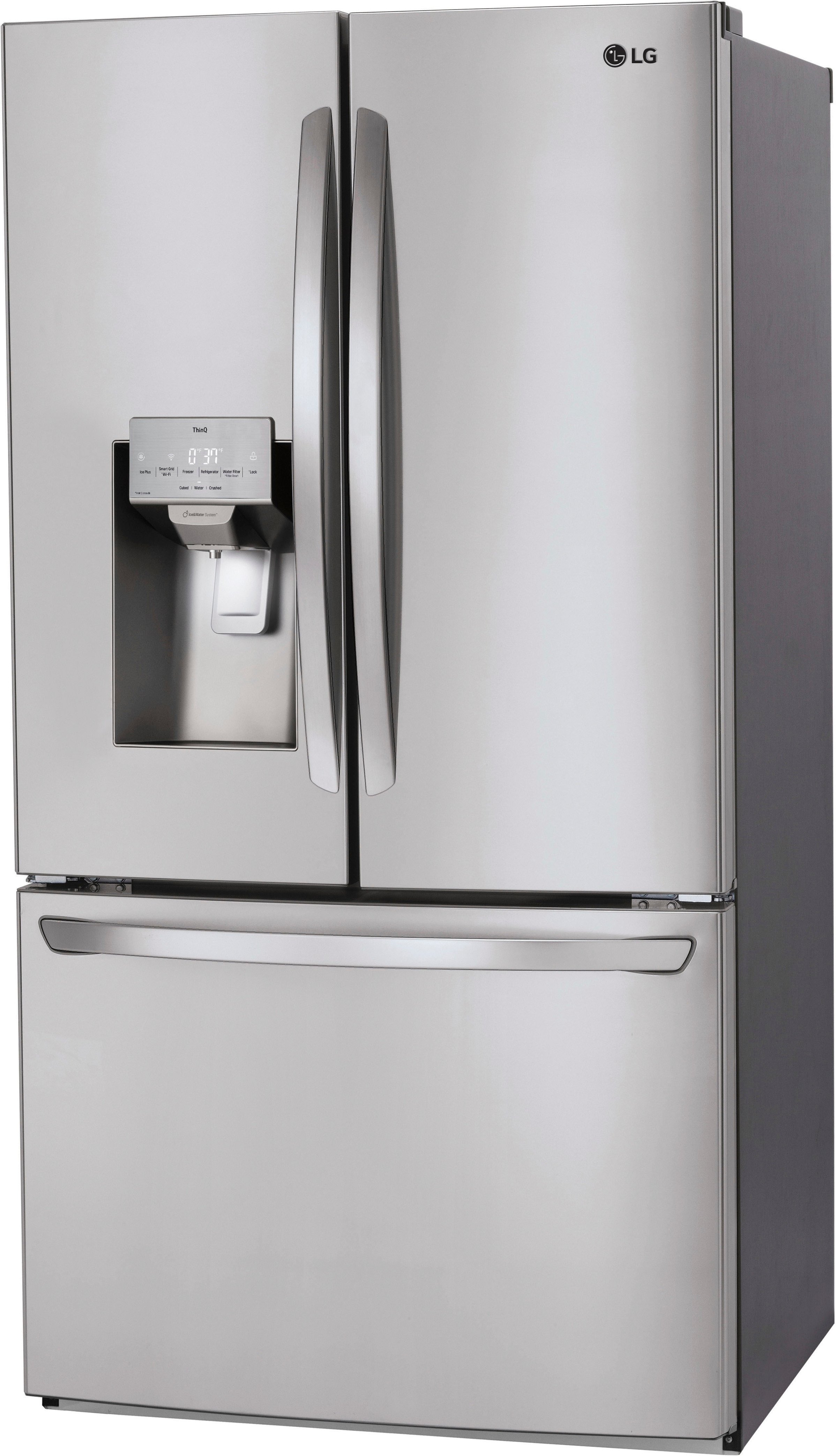Welcome to another practical guide from TheKitchenApplianceDad.com. Today, we’re diving into a common but sometimes confusing task: adjusting the temperature settings on your LG refrigerator. Whether you’ve just purchased a new model or are trying to optimize the performance of your existing fridge, understanding how to properly set the temperature is crucial for food safety and energy efficiency.
Understanding Your LG Fridge’s Control Panel
Before you start tweaking settings, it’s important to familiarize yourself with the control panel of your LG refrigerator. LG has various fridge models, each with slightly different features and control setups. Generally, you will find the temperature control panel either inside the fridge, usually above the top shelf, or on the front door with an LED display.
Types of Control Panels:
- Internal Manual Dial: Older models might have a simple dial inside the fridge that you turn to adjust the temperature.
- External Digital Control: Many newer models feature touch-sensitive pads or digital screens on the front door for more precise temperature management.

Step-by-Step Guide to Adjust the Temperature
For Fridges with a Digital Control Panel:
- Wake the Display: Lightly touch the display or press any button to activate the control panel.
- Enter Settings Mode: Look for a button that says “Settings,” “Menu,” or sometimes a gear icon. Press this to enter the adjustment mode.
- Adjust the Temperature: Use the arrow keys or plus and minus signs to adjust the temperature. Refrigerators should generally be set to 37 degrees Fahrenheit (3 degrees Celsius), and freezers to 0 degrees Fahrenheit (-18 degrees Celsius) for optimal operation.
- Confirm the Setting: After setting to the desired temperature, you may need to press “Enter” or “Confirm” to save the setting. Some models automatically save the setting after a few seconds of inactivity.
- Exit Settings Mode: Either press the “Home” or “Back” button, or simply wait, and the display will return to the normal view.
For Fridges with an Internal Manual Dial:
- Locate the Dial: Open the fridge and locate the dial, which is usually at the top.
- Adjust the Dial: Turn the dial to the desired setting. Most dials will have numbers from 1 to 5 or 1 to 9. Lower numbers mean warmer temperatures, while higher numbers mean colder temperatures.
- Wait for Changes: After adjustment, allow 24 hours for the temperature to stabilize at the new setting.
Tips for Maintaining Optimal Temperature
- Check Regularly: It’s a good idea to use an appliance thermometer to check the temperature of your fridge and freezer. This helps ensure they are at the recommended temperatures for food safety.
- Consider Usage and Climate: If you live in a very hot climate or notice that your fridge is packed with items, you might need to set it to a cooler setting than usual.
- Allow Space for Air Circulation: Avoid overpacking your fridge. Air needs to circulate around food items to keep them cool evenly.
- Regular Maintenance: Keep the coils of your fridge clean and ensure that the door seals are tight and not worn out. This helps your fridge run efficiently.
Troubleshooting Common Issues
Sometimes, even after adjusting your fridge’s temperature settings, you might notice that it doesn’t cool properly. Here are a few troubleshooting tips:
- Check for Power Issues: Ensure that your fridge is properly plugged in and receiving power.
- Inspect Door Seals: If the door seals are loose or broken, cold air might be escaping. Replace the seals if necessary.
- Look at the Coils: Dirty coils can hinder the performance of your fridge. Clean them regularly to ensure efficiency.
- Reset the Fridge: If all else fails, try resetting your refrigerator by unplugging it for about a minute and then plugging it back in.
For more specific guidance, you can always refer to your LG refrigerator’s owner’s manual, or visit the LG Support Website for assistance.
Key Takeaways
- Know Your Panel: Identify whether your LG fridge has a digital or manual control panel.
- Set Correct Temperatures: Aim for 37°F (3°C) in the fridge and 0°F (-18°C) in the freezer.
- Adjust Accordingly: Use the + and – buttons for digital controls or turn the dial for manual controls.
- Confirm Settings: Ensure settings are saved, either automatically or by pressing a confirm button.
- Check and Maintain: Regularly verify temperatures with a thermometer and maintain clean coils and proper door seals.
Adjusting your LG refrigerator’s temperature settings correctly can lead to better food preservation and more efficient appliance performance. Remember these tips from TheKitchenApplianceDad.com, and you’ll be a pro at managing your fridge’s environment inno time. Whether you’re cooling down for the summer months or ensuring your holiday leftovers are stored safely, these adjustments will keep your food fresh and your fridge functioning at its best.


